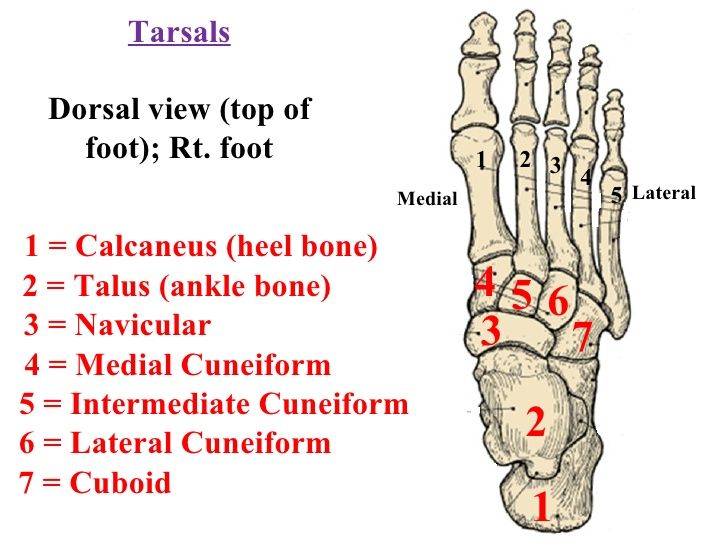Cuneiform
/kjuniʌfɔɹm/
1. [noun] - a wedge-shaped bone, especially and of the three bones located in the tarsus of the foot. - one of the bones of the internal, middle and external tarsus. See: https://medical-dictionary.thefreedictionary.com/Cuneiform+(anatomy) ; Accessed May 19 2019 Tarsals and Bones of foot from: pinterest.com
Source: https://medical-dictionary.thefreedictionary.com/Cuneiform+(anatomy)

Frequently Asked Questions
How do the cuneiform bones contribute to maintaining foot structure compared to other tarsal bones?
The wedge-shaped cuneiform bones play a key role in supporting the foot arch. They differ from other tarsal bones such as the talus and cuboid by providing critical midfoot stability and enabling effective weight distribution during movement.
In everyday steps, what role do the cuneiform bones play in the mechanics of foot function?
During everyday walking, the cuneiform bones help stabilize the foot by supporting the medial arch and evenly dispersing pressure. This subtle yet essential contribution aids in harmonious foot mechanics without drawing attention to their discreet location in the midfoot.